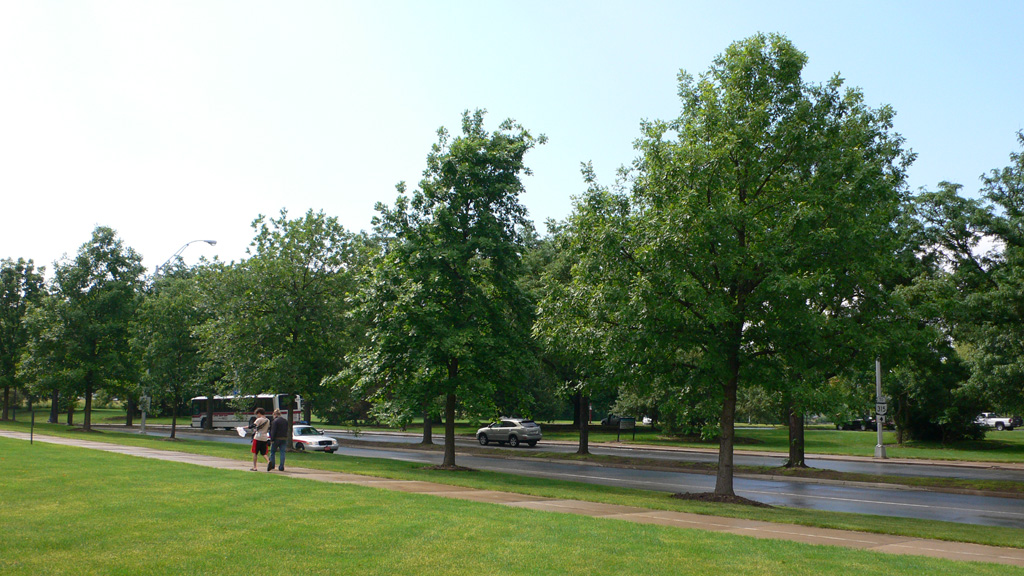The bur oak is one tree that deserves more consideration and study for use as an urban tree. This oak has glossy, deep green foliage typical of the white oak group. Oaks are often thought of as slow growing. This is not true and bur oak is one of the faster growing members of the white oak group. Once it establishes its root system, bur oak increases in girth as fast as silver maple according to forestry literature. Of course the oak is much longer lived. Bur oak tends to have an open, irregular juvenile habit, but this leads to more structurally stable branching as the tree matures. The mature form of the bur oak can be stunning and quite attractive.
The seedling-grown bur oaks pictured below were planted in an unremarkable 24-foot lawn strip on the Ohio State University campus. No special care is being given to these plants except mulching near the trees to prevent mower damage. Once established (3-5 years) their growth rate exceeded expectations. The rate of growth has increased each year, most notably in 1999, a particularly dry year. During 1999 these trees showed better than expected growth, and the foliage remained a rich green. Healthy bur oaks flush twice per year and the length can be variable as the tree may donate more resources to roots one year and more to vegetation the next. In 2000, these trees flushed in May and again Late June. Initial twig extension for 2000 exceeded that for 1999 by 60% (See photo below). Twig extension at the tree tops exceeded 30 inches in several cases. Twig extension for 2001 was slightly less than for 2000, but at average of 21 inches on the lower branches that is still a healthy rate. The growth rate of bur oak in the urban landscape is highly variable, and may not necessarily reflect what is listed in the literature.
Bur oak is well structured and storm resistant. The stout, open branching structure requires less pruning near power lines when compared with other commonly planted trees of similar size such as maples. Fall color is not showy. Bur oak produces the largest acorns of the native oaks but they are favored as forage by animals. Heavy crops of acorns are only borne every 3-5 years. This tree should be sited where there is room to grow and not planted in restricted areas such as narrow tree lawns. This oak is tolerant of alkaline soils. It can be expected to reach heights of 80 feet under proper conditions. Bur oaks would make impressive long-lived shade trees around strip malls and other urban sprawl areas where there are wide lawn strips, large islands, and open spaces waiting for a little shade.
This tree has been grown successfully in the Ohio Production System (OPS). The OPS is a high efficiency containerized stock system that is currently being used by the City of Columbus to produce trees for urban planting. For more information see Struve, D.K. and T. Rhodus. 1990. Turning copper into gold. American Nurseryman. 172(4):114-125.
